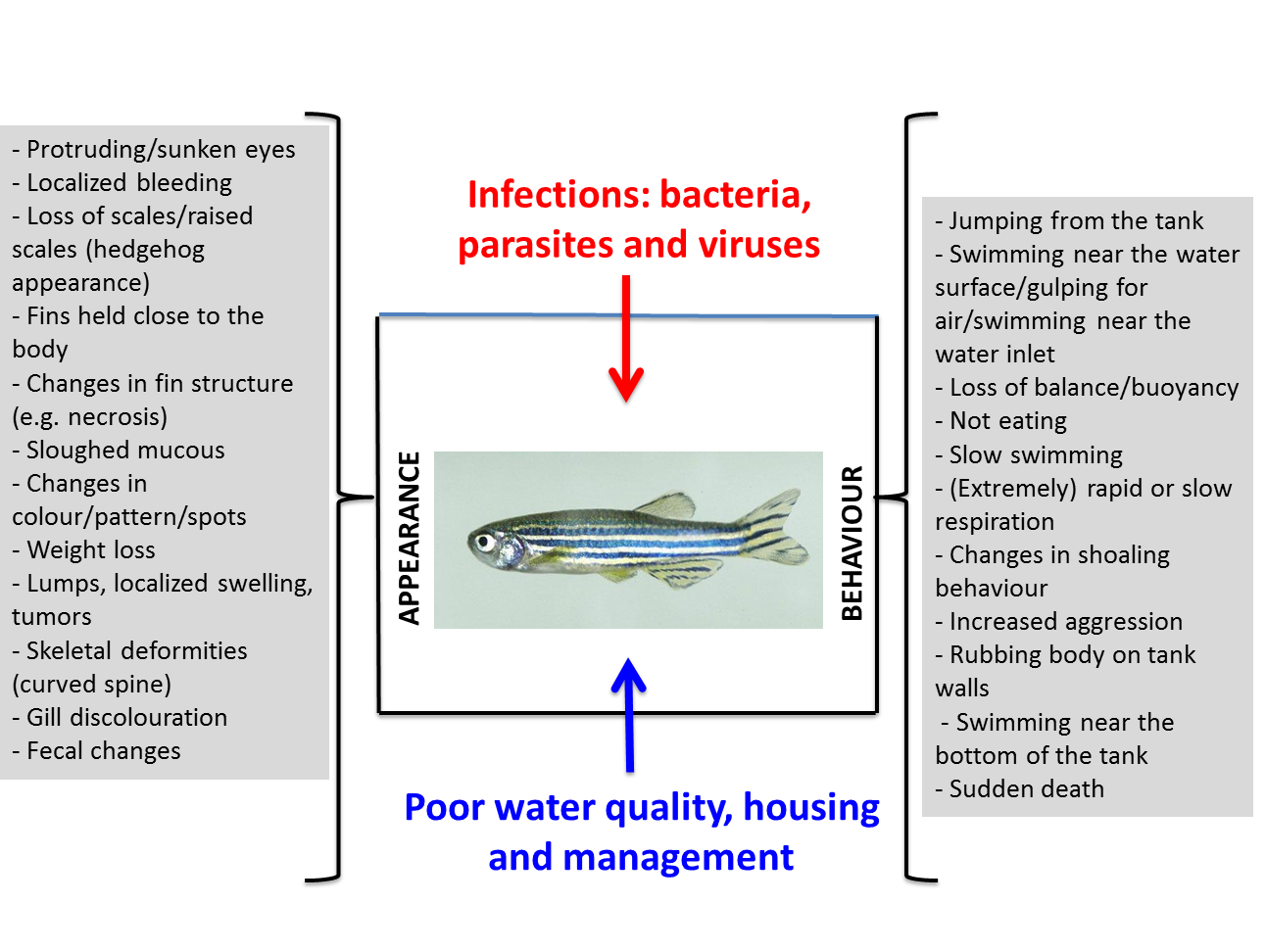Undisturbed observation means that animals are observed from a distance with the least possible disruption. Ideally, undisturbed observation is carried out with a camera in the animal room while viewing the images in another room. This cannot always be done. In that case, the observer will have to enter the animal room as quietly as possible and wait a while prior to starting the observation. Once the fish are seen to no longer react to the presence of the observer, by swimming normally and not hovering near the area where they anticipate being fed, one can begin the observation.
Sick or chronically stressed zebrafish display numerous changes in behaviour or appearance and these changes are cause-dependent (see the diagrammatic figure below). The diagram lists the major changes that occur as a result of disease or poor water quality, inadequate housing or bad management. Changes can also be caused by induced genomic mutations (the mutant’s phenotype).

Aspects that may need to be evaluated:
- Activity and location: a healthy zebrafish is active but also has rest periods. Zebrafish will use the full height of the water column to swim in. Zebrafish are diurnal animals: they are active during the period of (day)light. Aberrant behaviour will occur earlier and be more pronounced during the active phase. It may be relevant to also observe the animals during the dark period. This can be done using infrared or dimmed lighting.
- Social interaction: normal or abnormal, e.g. fighting or withdrawal from the shoal.
- Alertness: alert zebrafish explore and test their environment; how the fish responds to changes is an indication of its alertness. For instance, fish may respond to food being offered, or to tapping on the tank.
- Abnormal behaviour, such as the inability to maintain equilibrium, hyperactivity and rapid breathing.
- Abnormal appearance, such as deformities or abnormal development (e.g. tumorsTumor Neoplasm, new growth. Is predicated upon autonomous growth of cells or tissues into benign or malignant tumors., severe weight loss (figure 1), and skeletal deformities (scoliosis, figure 2).
Undisturbed observation should include an assessment of the conditions in the animal room (such as abnormal light or noise levels).

